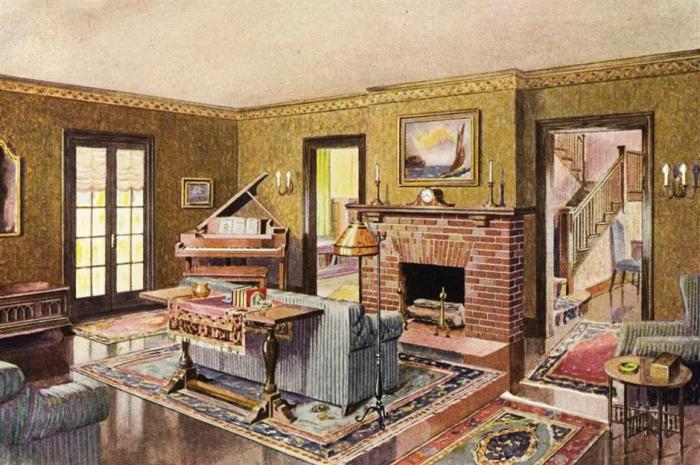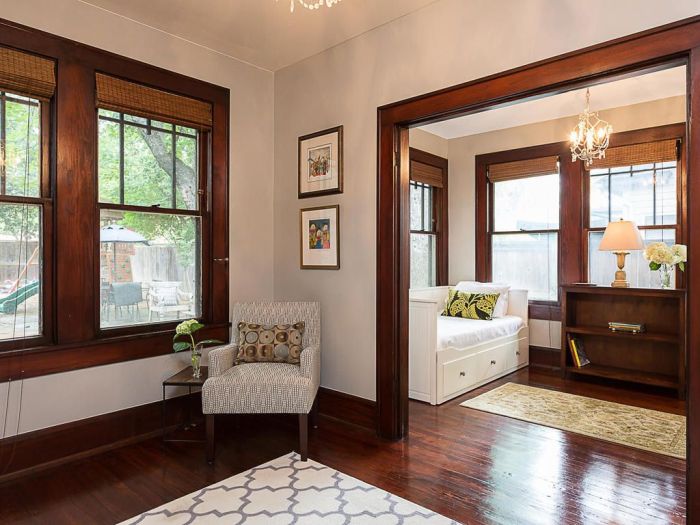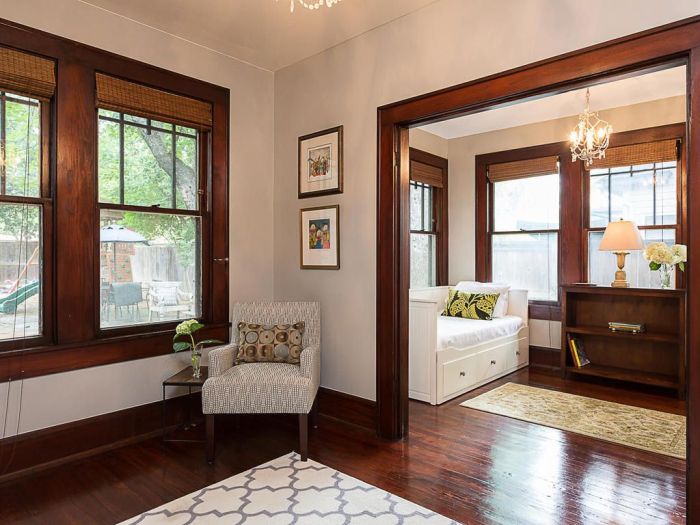1920 House Interior Design: A Journey Through the Roaring Twenties
1920 house interior design embodies the spirit of the Roaring Twenties, a time of unparalleled social and cultural transformation. This era witnessed a shift in design aesthetics, embracing modernism and a newfound appreciation for streamlined elegance. From the geometric patterns of Art Deco to the bold use of color and the rise of functional spaces, 1920s interiors reflected the dynamism of the age.
This article delves into the key features, iconic elements, and enduring appeal of 1920s house interior design, offering insights into the design principles that continue to inspire contemporary spaces.
The 1920s marked a departure from the ornate Victorian era, ushering in a new era of simplicity and functionality. This transition was fueled by social changes, including the rise of the middle class, increased urbanization, and the emergence of new technologies.
The advent of mass production made modern furniture and design elements accessible to a wider audience, further contributing to the evolution of interior design.
Modernizing a 1920s House Interior

A 1920s house offers a unique blend of historical charm and architectural detail. While the era’s aesthetic might not be everyone’s cup of tea, there are ways to modernize a 1920s home interior without sacrificing its character. This involves incorporating modern elements while preserving the original architectural features and design principles of the era.
Preserving Historical Charm
It’s crucial to acknowledge the historical significance of a 1920s house and strive to maintain its original charm. This can be achieved by:
- Maintaining Original Architectural Features:Retaining original moldings, fireplaces, built-in cabinetry, and hardwood floors can add a touch of authenticity to the space.
- Restoring Period Details:If any original features have been damaged or altered, consider restoring them to their former glory. This can involve refinishing wood, restoring stained glass windows, or replacing missing hardware.
- Using Period-Appropriate Colors:While you can add pops of modern color, try to stick with a period-appropriate color palette for the main walls and trim. This could include shades of cream, beige, sage green, or soft blues.
Incorporating Modern Elements
While preserving the historical character is important, you can also inject a modern touch by:
- Updating Lighting:Swap out outdated fixtures with modern pendant lights, sconces, or track lighting. These can provide a contemporary feel while complementing the existing architecture.
- Introducing Modern Furniture:You don’t have to sacrifice comfort for style. Incorporate modern furniture pieces with clean lines and neutral colors to create a balanced aesthetic. For example, a sleek leather sofa or a modern dining table can add a touch of contemporary flair.
1920s house interior design often features a blend of traditional and modern elements, with a focus on comfort and functionality. While these homes may have been larger, the principles of efficient space planning can be applied to smaller spaces.
For example, if you’re designing a 1000 sq ft house, consider incorporating 1000 sq ft house interior design techniques to maximize space and create a sense of flow. This approach can be applied to 1920s homes as well, making them feel larger and more inviting.
- Adding Contemporary Art:Modern artwork can bring a touch of personality and visual interest to a 1920s home. Choose pieces with bold colors, abstract designs, or geometric patterns that complement the existing architecture.
Color and Texture, 1920 house interior design
Color plays a significant role in defining the overall mood and aesthetic of a space.
1920s house interior design often featured intricate details and a sense of grandeur, with elements like ornate moldings, high ceilings, and fireplaces. This era’s design philosophy can be adapted to modern homes, even those on smaller plots like a 10 marla house interior design.
Incorporating these elements in a more streamlined and contemporary way can achieve a similar elegance and timeless appeal. While the scale might be different, the spirit of the 1920s design can still inspire beautiful and functional spaces.
- Color Palette:While sticking to a period-appropriate color palette for the main walls and trim, consider incorporating pops of modern color through accent walls, furniture, or accessories. This can create a visually appealing contrast and add a touch of contemporary flair.
1920s house interior design often embraced a sense of grandeur and formality, with intricate moldings, high ceilings, and a focus on traditional furniture. While these elements can be challenging to replicate in a smaller space, the principles of maximizing natural light, using light and airy colors, and incorporating vintage accents can still be applied.
If you’re working with a more compact space, consider taking inspiration from 1000 square feet house interior design ideas, which often prioritize functionality and clever storage solutions while maintaining a stylish aesthetic. By blending these approaches, you can create a 1920s-inspired home that feels both timeless and practical, regardless of its size.
For example, a bright teal accent wall can add a modern touch to a living room with cream-colored walls and period-appropriate furniture.
- Texture:Adding texture can enhance the visual interest of a space. Incorporate textured fabrics, such as velvet or linen, in throw pillows, curtains, or upholstery. You can also use textured wallpaper, rugs, or artwork to add depth and dimension to the space.
Furniture and Accessories
Furniture and accessories are essential elements in defining the overall style of a space.
- Furniture:Consider incorporating a mix of modern and vintage furniture pieces. While you might choose to retain some period-appropriate furniture, you can add modern elements through pieces with clean lines, neutral colors, and unique materials. For example, a sleek leather sofa or a modern dining table can add a touch of contemporary flair.
- Accessories:Accessories can add a touch of personality and visual interest to a space. Choose modern accessories with bold colors, geometric patterns, or unique materials. For example, a modern sculpture or a set of colorful throw pillows can add a touch of contemporary flair.
Concluding Remarks

The allure of 1920s house interior design lies in its timeless elegance and ability to seamlessly blend historical charm with modern sensibilities. Whether you’re seeking to recreate the grandeur of a bygone era or simply draw inspiration from its distinctive elements, the design principles of the Roaring Twenties offer a wealth of possibilities.
From the iconic geometric patterns and bold color palettes to the functional layouts and the emphasis on natural light, 1920s interiors continue to captivate and inspire.
Questions and Answers: 1920 House Interior Design
What are some common colors used in 1920s interior design?
Common colors include rich jewel tones like emerald green, sapphire blue, ruby red, and amethyst purple, along with metallic accents like gold and silver. These colors were often used in combination with neutral tones like cream, beige, and gray to create a balanced and sophisticated aesthetic.
What are some popular furniture styles from the 1920s?
Popular furniture styles include Art Deco, with its geometric shapes and luxurious materials, and the streamlined, minimalist aesthetic of Bauhaus. These styles often featured bold geometric patterns, luxurious fabrics, and a focus on functionality and comfort.
How can I incorporate 1920s elements into a modern home?
You can incorporate 1920s elements by using geometric patterns in wallpaper or textiles, incorporating metallic accents in furniture or accessories, and selecting furniture with clean lines and a minimalist aesthetic. You can also add vintage lighting fixtures, like chandeliers or sconces, to enhance the ambiance.

